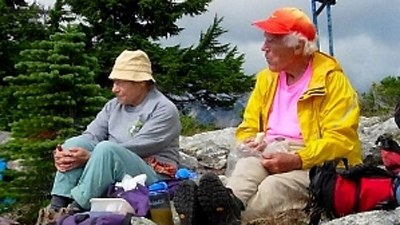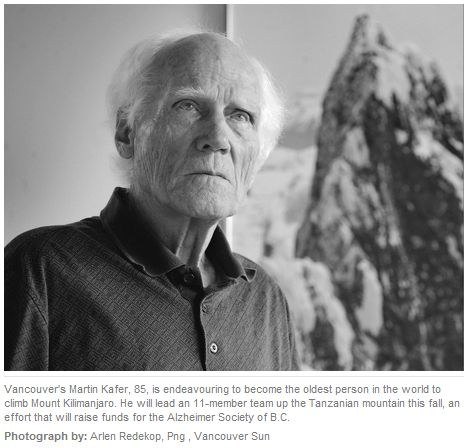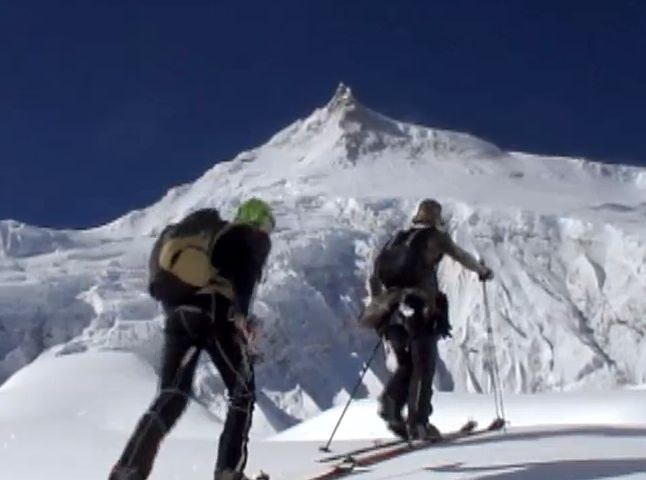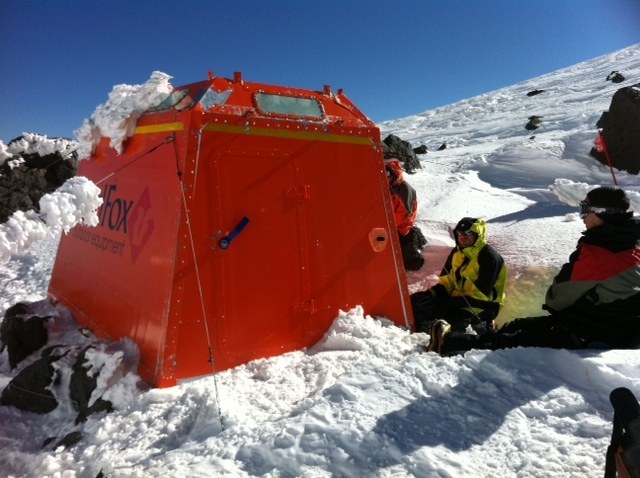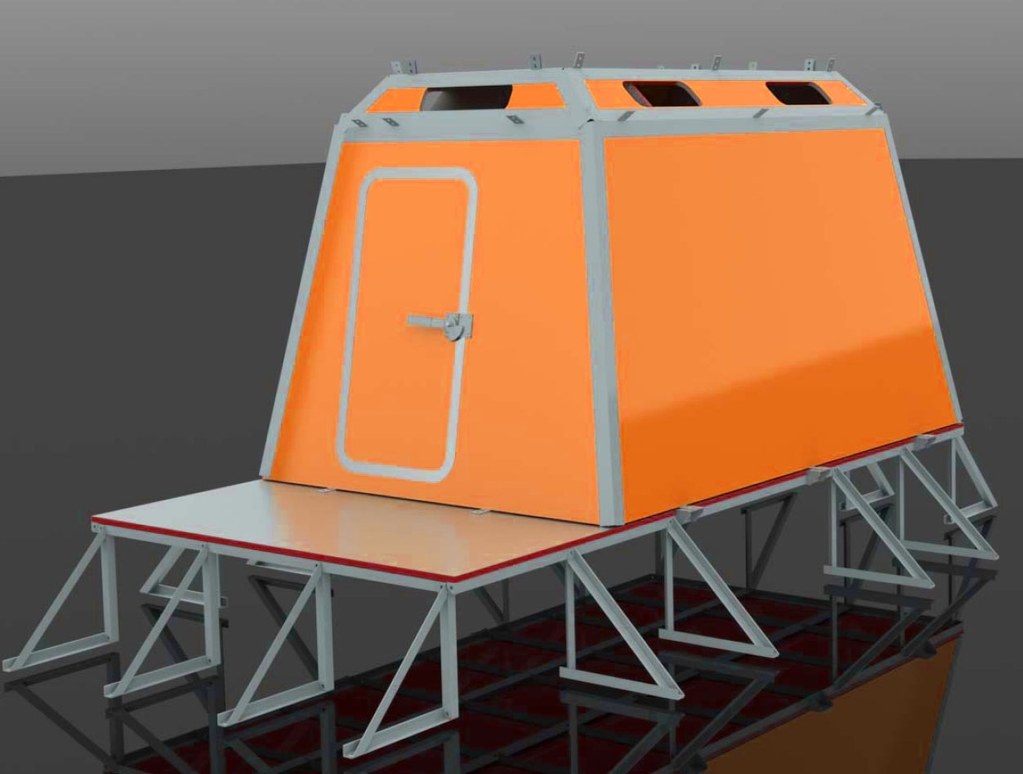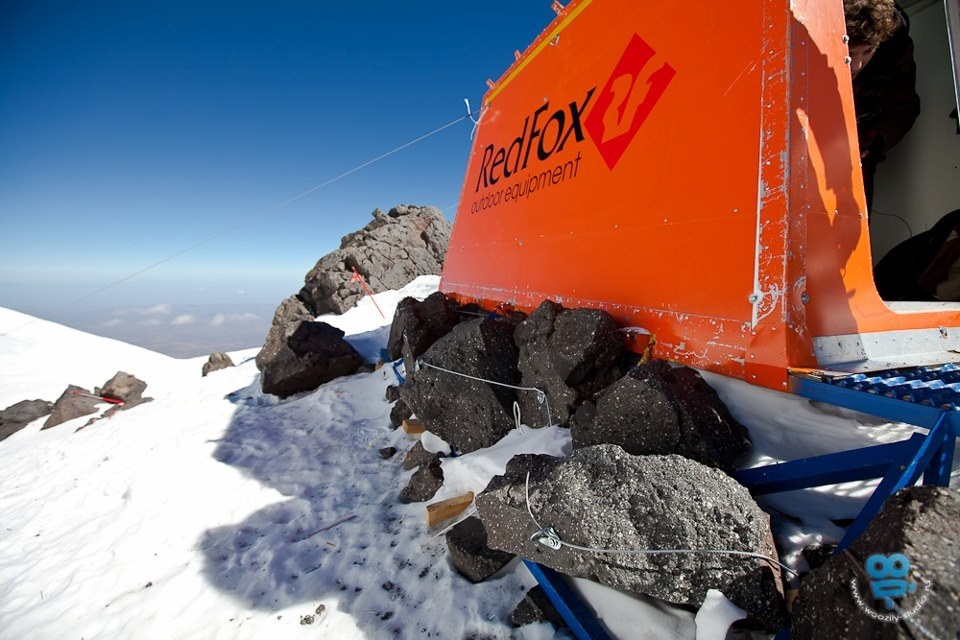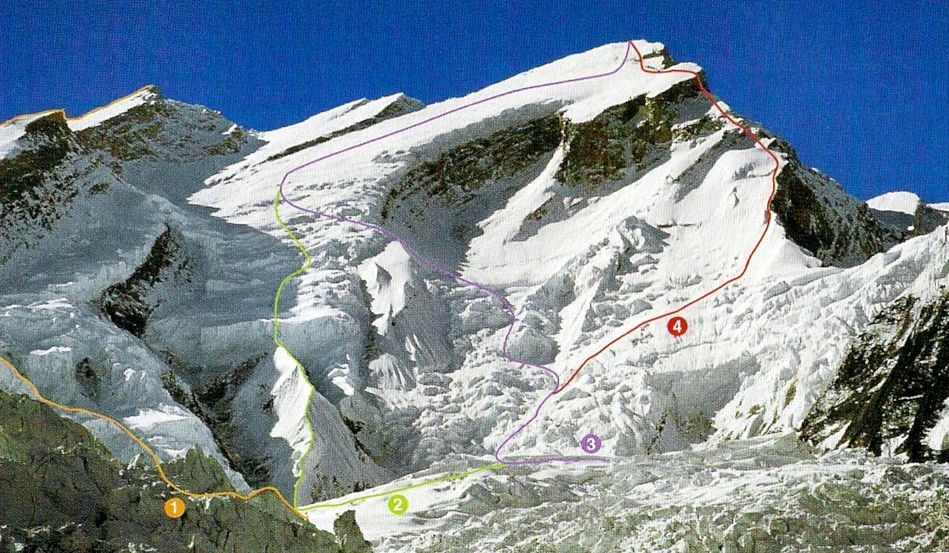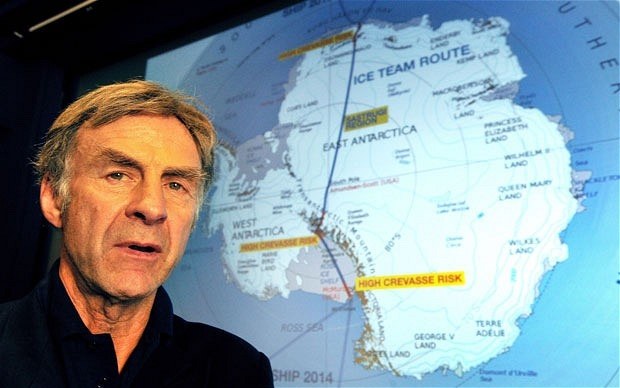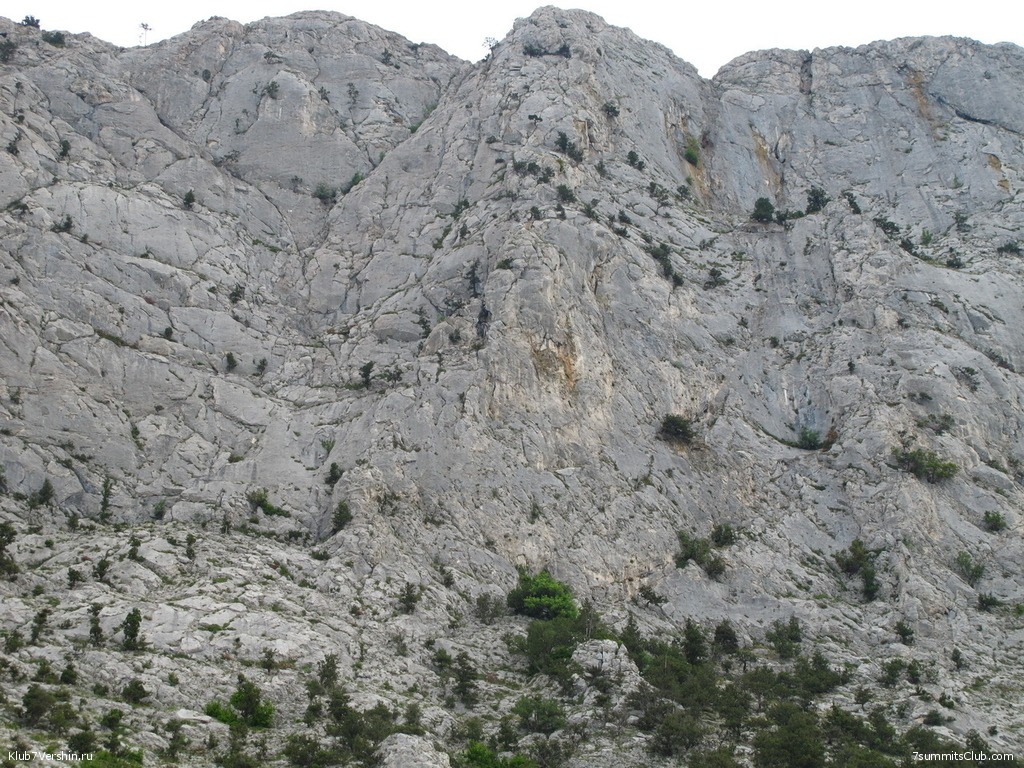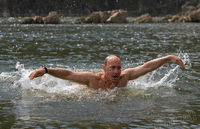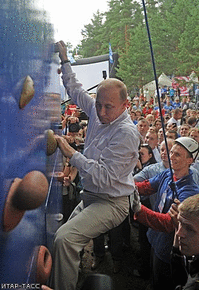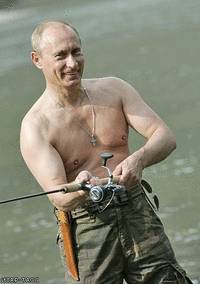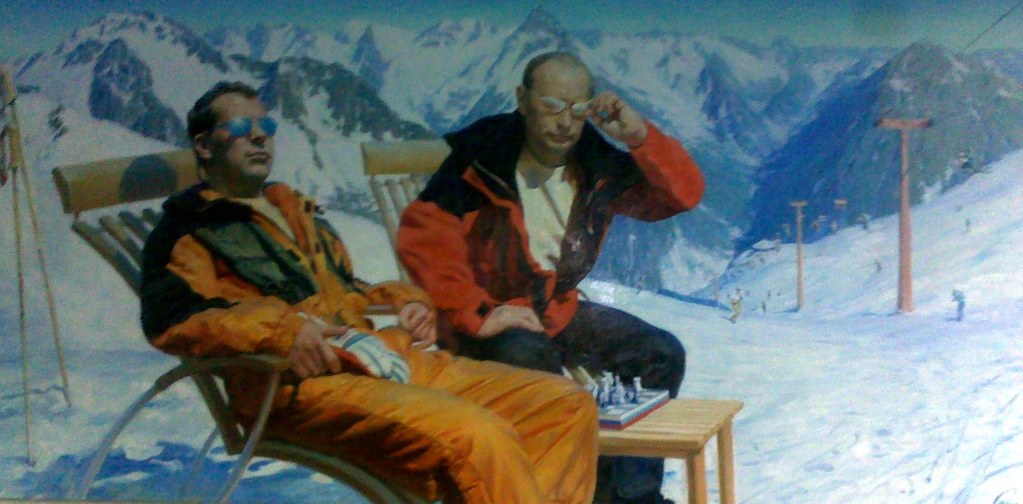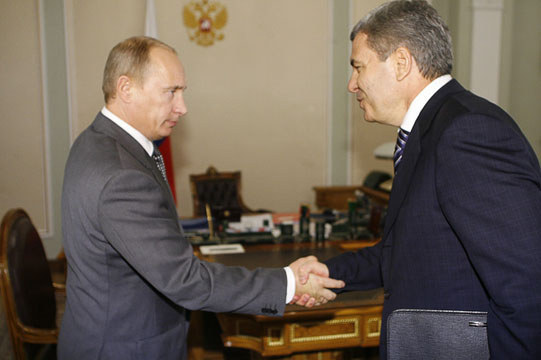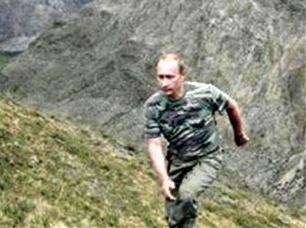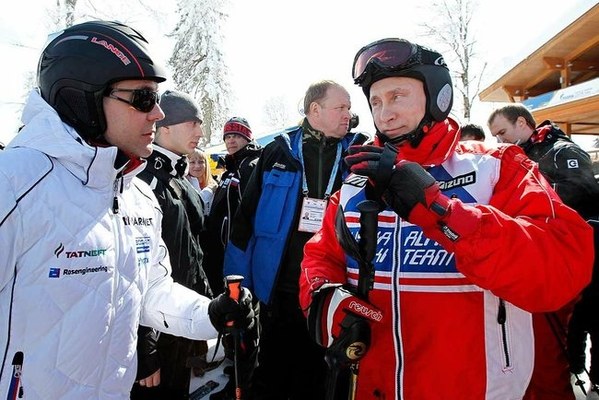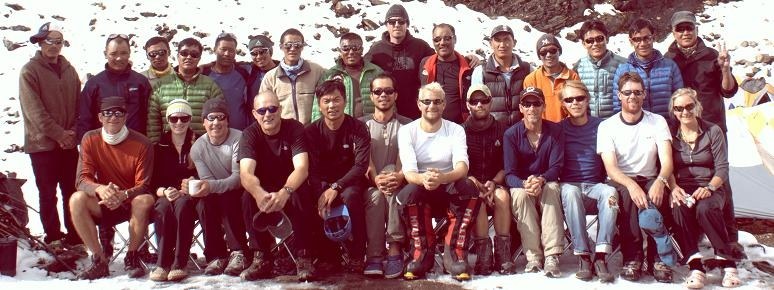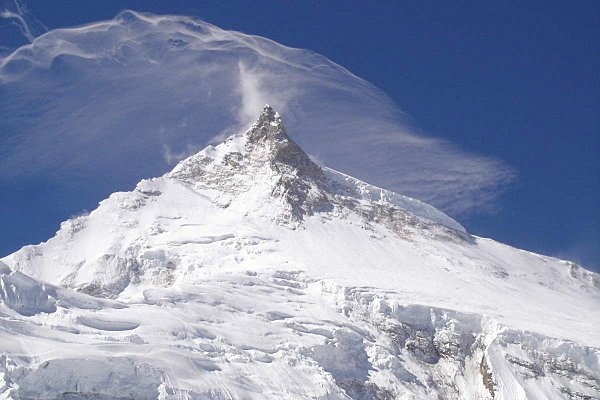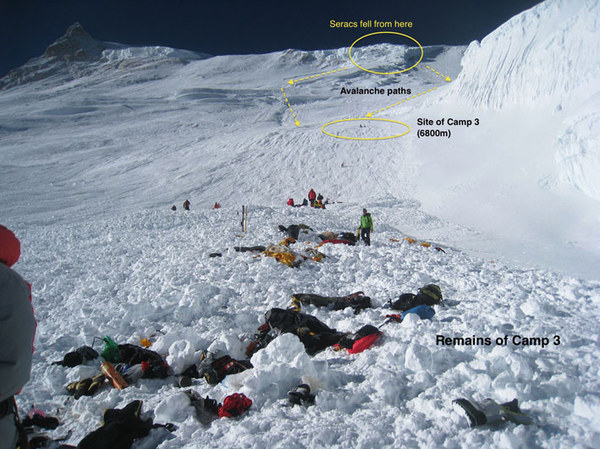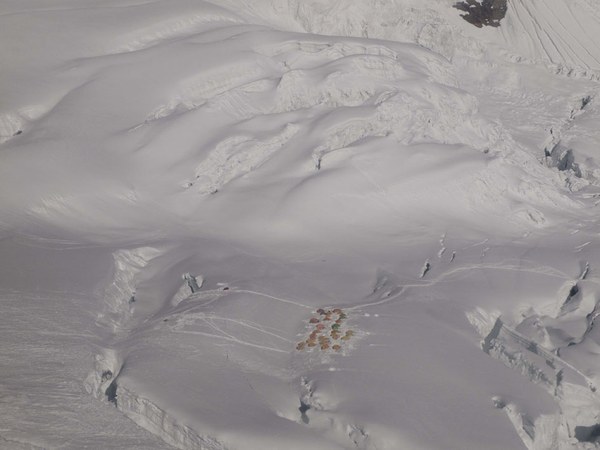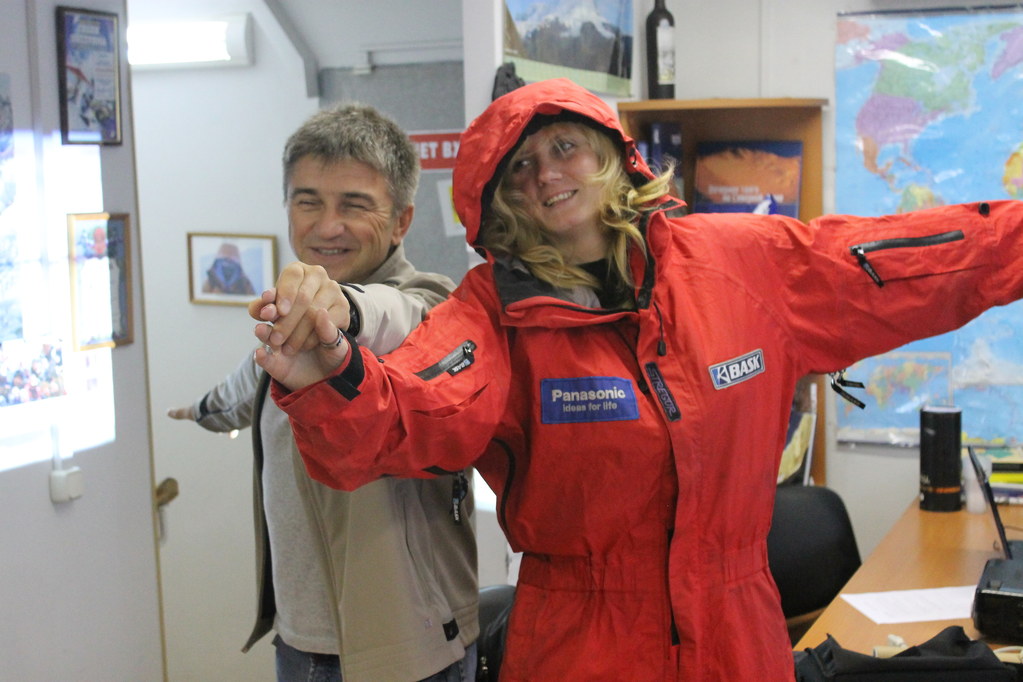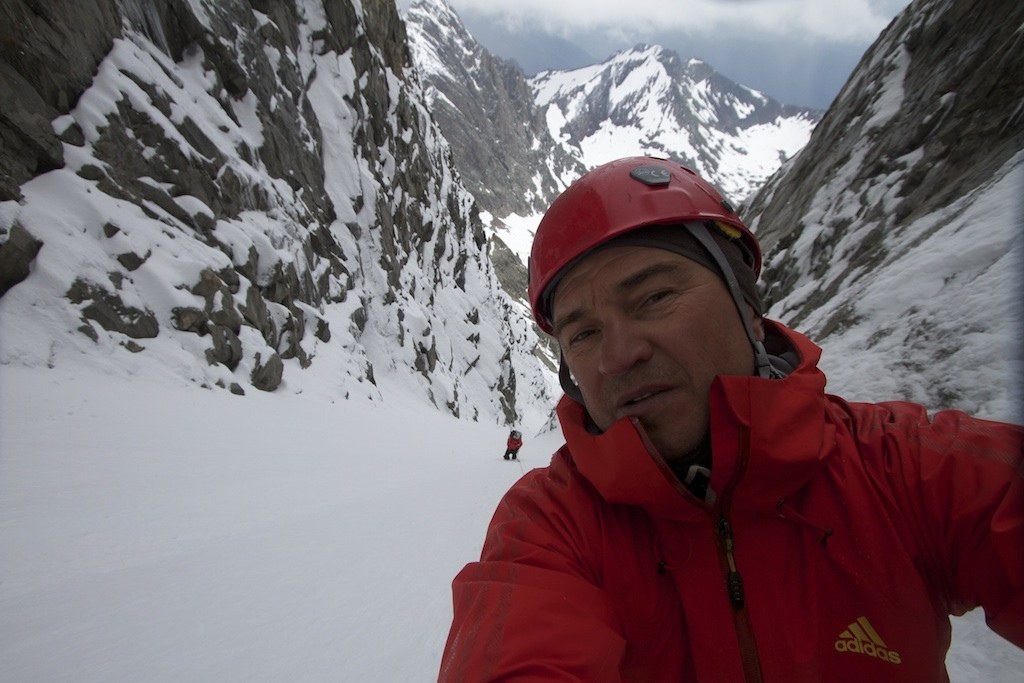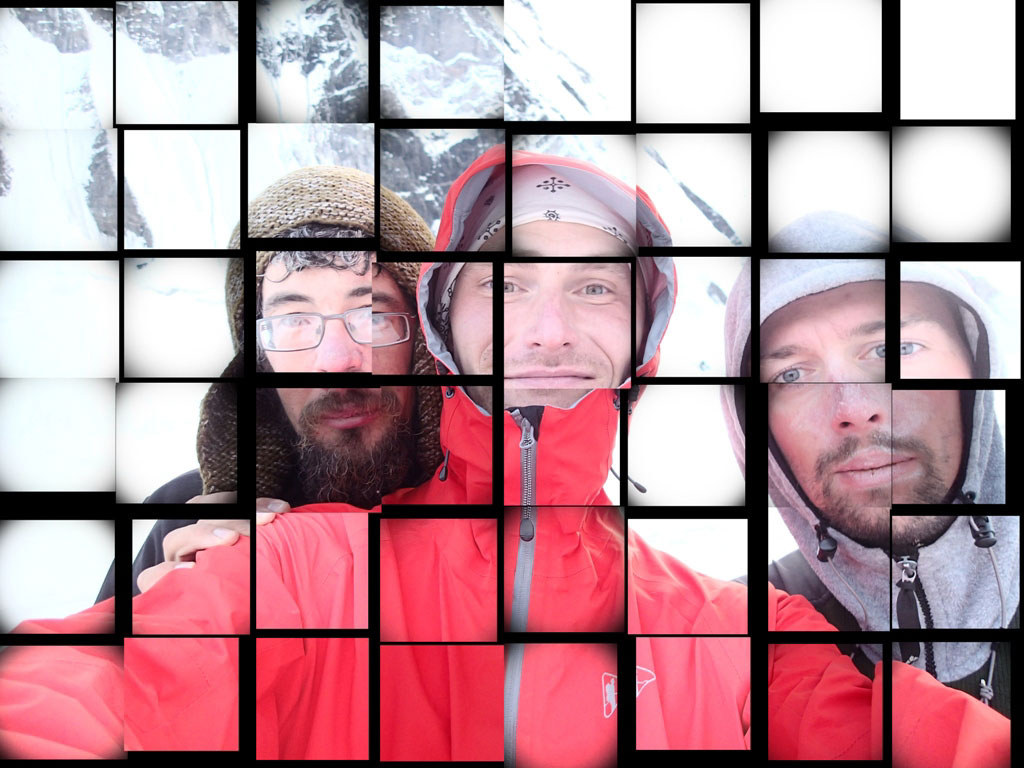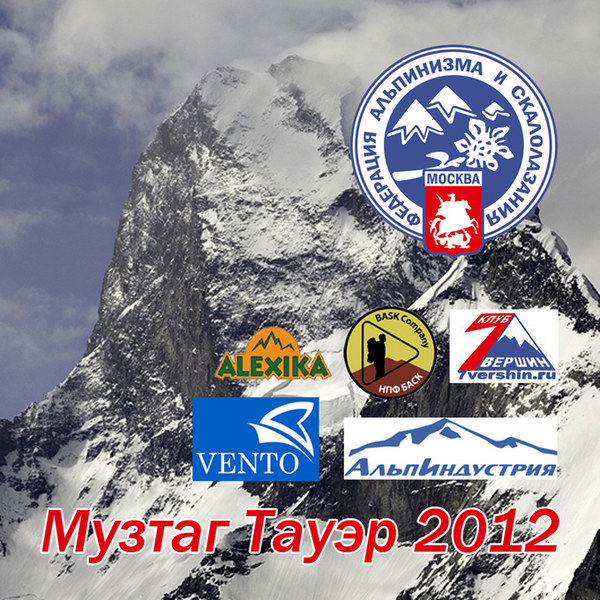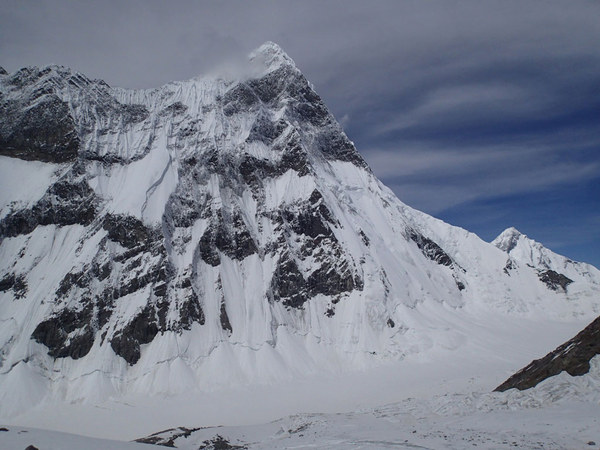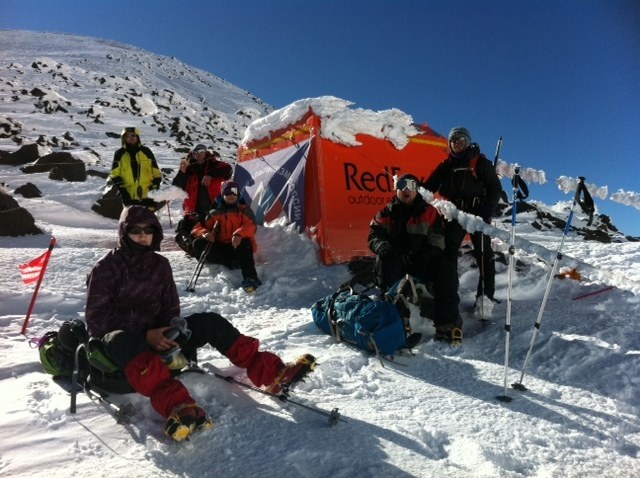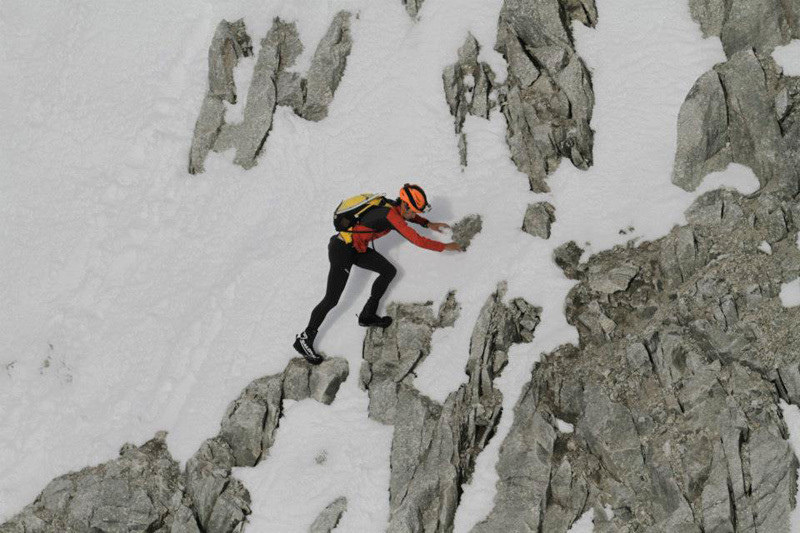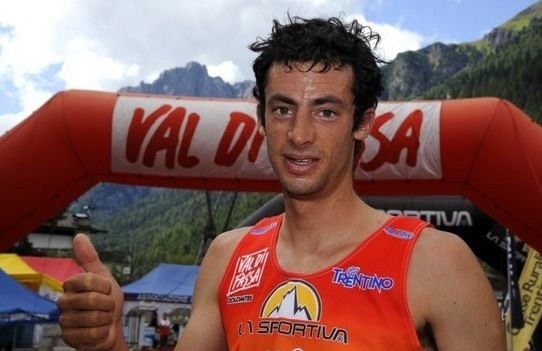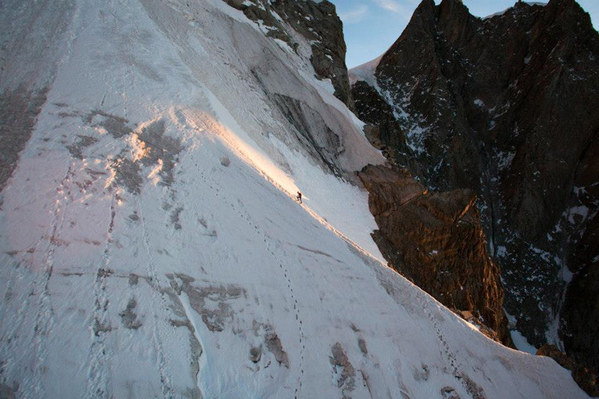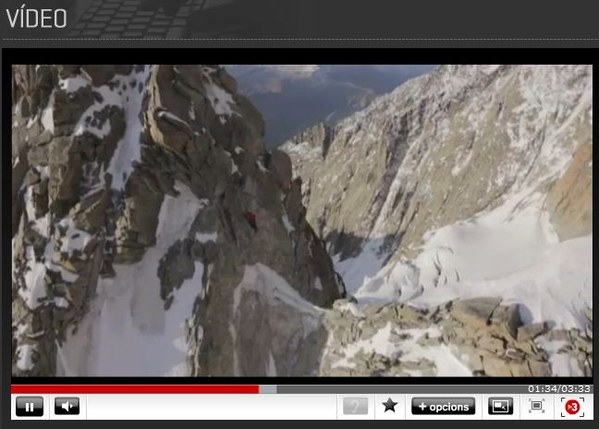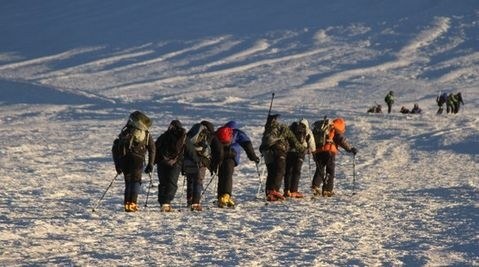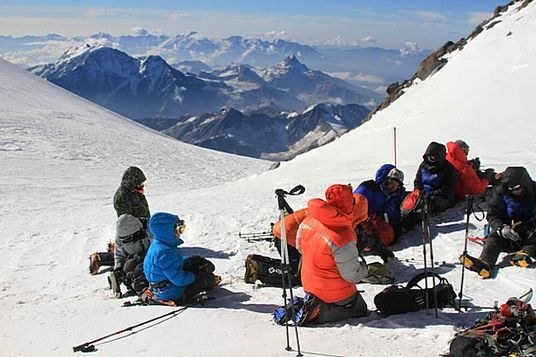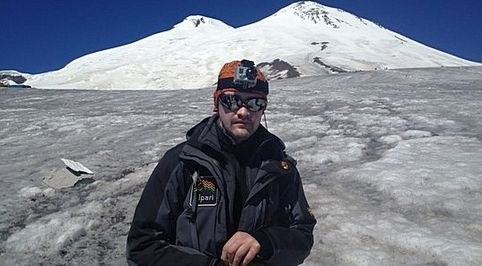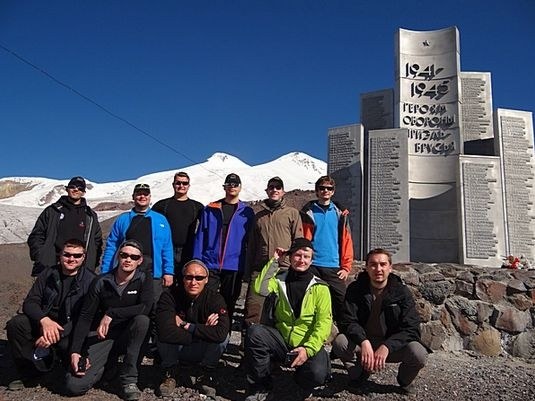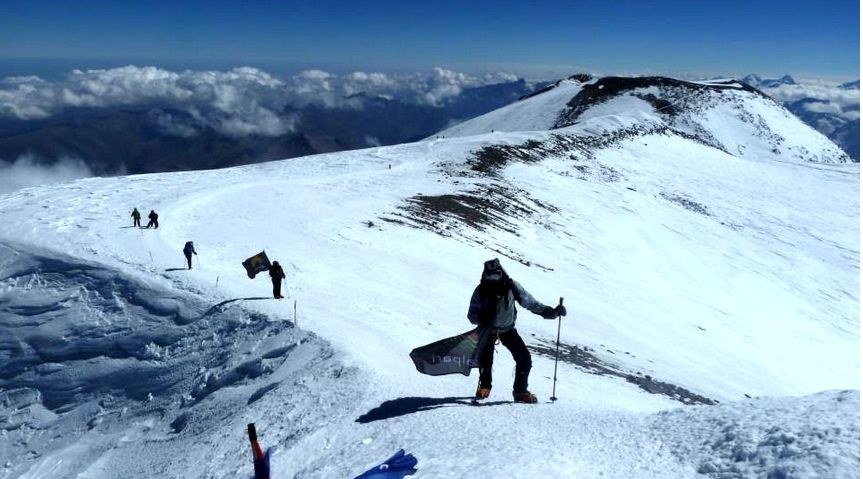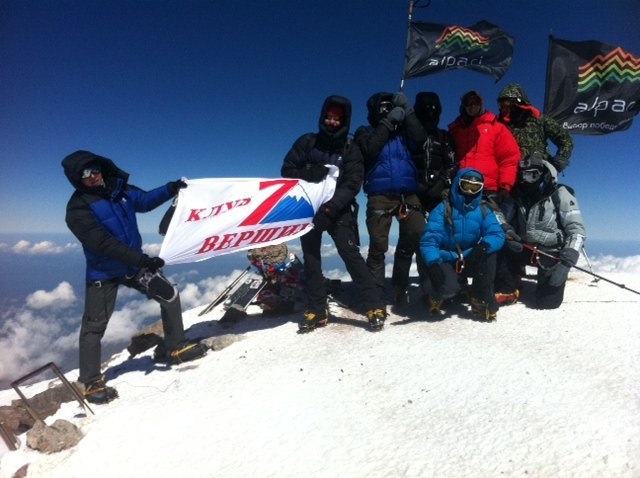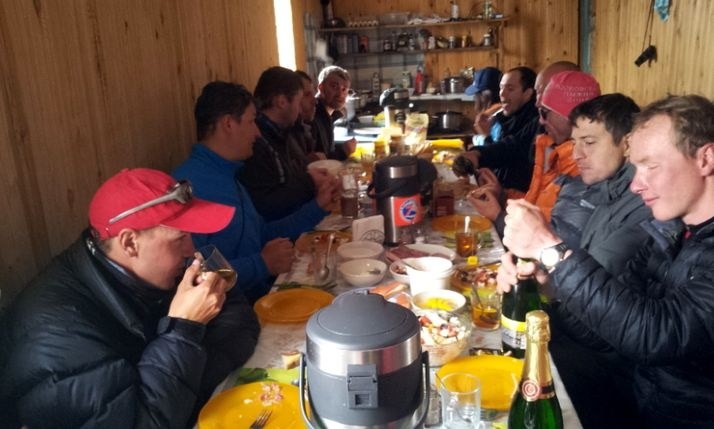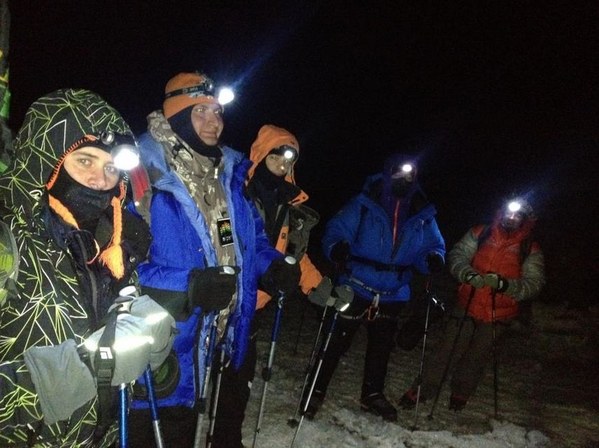All news
Start of a walking part of trek to Everest Base Camp
Today, a group of Dmitry Ermakov flew fromKathmanduto Lukla. The flight was fine. After a short break, our trekkers started a walking part of teh route. They are now stopped for overnight in thevillageofPhakding. All is OK.
Today, a group of Dmitry Ermakov flew fromKathmanduto Lukla. The flight was fine. After a short break, our trekkers started a walking part of teh route. They are now stopped for overnight in thevillageofPhakding. All is OK.
A new age record on Kilimanjaro
Kilimanjaro.
Age be damned. An elderly Vancouver couple successfully climbed Africa's highest mountain, becoming the oldest known couple to do so. Esther Kafer, 84, and her husband Martin, 85, reached the summit of Mount Kilimanjaro Wednesday, according ...
Age be damned. An elderly Vancouver couple successfully climbed Africa's highest mountain, becoming the oldest known couple to do so.
Esther Kafer, 84, and her husband Martin, 85, reached the summit of Mount Kilimanjaro Wednesday, according to the Alzheimer's Society of B.C. Their achievement has yet to be verified by Guinness World Record officials. The Tanzanian mountain is 5,885 metres high (19,341 feet).
Motivated by the rapid rate Martin's sister's dementia was advancing, the couple took part in the climb to help raise money for the Alzheimer's Society of B.C.
"Each time we visit Martin’s sister we are overwhelmed by the telling signs of the rapid rate her dementia is advancing," the pair said on the society's website. They point out that the former researcher and McGill professor is now "reduced to incoherent words... a sad hulk of a mind" and needs 24-hour care.
Married since 1953, the Kafers have spent their lives travelling the world, climbing mountains, and skiing.
"Esther and Martin's achievement epitomizes the spirit of the Ascent for Alzheimer's event, which is that no matter how challenging the journey there is support," said Jean Black, CEO of the Alzheimer Society of B.C.
Eager to obtain international work experience, the self-described "old-timer mountaineers and life-long outdoor enthusiasts" immigrated to Canada in 1954 from Switzerland and never looked back.
When asked to provide advice for those with more sedentary lifestyles, both champion fit, active lives and sharp mental acuity.
"Be active all of the time, eat well, use your arms your legs and your head. Most of all your head. Take every day as a bonus day," the Kafers told Canadian Achievers.
The Kafers helped to raise more than $24,000 for the Alzheimer's Society of B.C.
The 7 Summits Club starts the climbing and trekking season in Nepal
The 7 Summits Club starts the climbing and trekking season in Nepal Today our guide Dmitry Ermakov flies to Nepal. The plans - trekking to Everest base camp and climbing Island Peak. Tomorrow, the first group of trekkers departs from ...
The 7 Summits Club starts the climbing and trekking season in Nepal
Today our guide Dmitry Ermakov flies to Nepal. The plans - trekking to Everest base camp and climbing Island Peak.
Tomorrow, the first group of trekkers departs from Moscow.
They will pass the legendary road to the base camp of Mount Everest, and then by helicopter return to Kathmandu, from where will go to the Chitwan Park. After staying in the jungle, swimming with elephants, the expedition expects cultural program in New Delhi.
The next group on this route is to start on October 28.
Successful speed summit and decent of Manaslu in less than 24 hours
Cho-Oyu.
A long cherished dream of Benedikt Böhm’s came true on September 30th. After 15 hours and 3,300 metres of climbing without oxygen, he stood on the summit of Manaslu (8,163 m), the eighth highest mountain in the world . After ...
A long cherished dream of Benedikt Böhm’s came true on September 30th. After 15 hours and 3,300 metres of climbing without oxygen, he stood on the summit of Manaslu (8,163 m), the eighth highest mountain in the world . After equally exceptional climbs, his partners, Sebastian Haag and Constantin Pade, were stopped just short of the summit.
The ascent took place in the aftermath of the avalanche that claimed several lives a week before. Although over-shadowed by this tragedy, the climbers decided to make one last attempt to climb the peak because of the years of preparation and mental commitment. The fact that they had done everything possible to help the victims of the accident helped them make the decision. "The decision to try for the summit after such a tragedy was a difficult one, but ultimately I decided to climb in their honour and it also helped me cope with the emotional challenges I was also going through from being first on-scene to such a tragedy,” said Benedikt Böhm.
For Böhm and Haag, the journey up Manaslu began five years earlier. In 2007 they travelled to Manaslu with the same goal in mind, but had to turn back at 7,300 metres due to the danger of avalanches. This time around, after acclimatizing for weeks and a whole day of decision-making in base camp, the team had a stroke of luck: a weather window and stable snowpack.
Setting off at 6pm from base camp at 5,000 m and without oxygen, Benedikt and Sebastian had almost 3,300 vertical metres of climbing ahead of them to reach the summit. Conditions deteriorated at 7,400 metres and the three climbers were battling fierce storms and icy cold. Böhm, who went on ahead of the team, waited for Haag in an unoccupied tent at camp two. After an hour it was time to get underway again, and they considered abandoning the attempt, but mustered the effort to continue the ascent as a group. The wind eased off as the sun went down. Benedikt Böhm went the final 150 metres alone to reach the summit at 9 in the morning, after five hours of climbing from camp two.
Happy, but humbled in remembrance of the accident a few days previously, he did not pose for the usual victory shot on the summit. Instead he dedicated the ascent to the climbers who had died in the accident. After waiting for an hour he went back to meet with Sebastian Haag and Constantin Pade who chose to turn back 150 meters short of the summit to save their energy for a safe ski descent. “The most important thing of any expedition is first and foremost to come home safely,” commented Sebastian Haag. “The events of the past few weeks have given me even more respect for the power of these mountains and my first goal is to see my family again.” Skiing together, the group reached base camp after 8 hours of descent. The total climb, including speed ascent and ski descent, took 23.5 hours. Typical climbs up Manaslu using oxygen take four days.
It was an unbelievable achievement, not just for Benedikt Böhm, but for the whole team on Manaslu. According to official records, it is the first ever speed ascent of Manaslu coupled with a subsequent ski descent.
Opening of the rescue shelter "Station 5300 Red Fox" on the saddle of Elbrus
Elbrus.
Mountaineering Federation of Russia together with its partners have successfully completed a unique project for the rescue shelter. Installation of structures was completed in early August, and at the end of September, after months of ...
Mountaineering Federation of Russia together with its partners have successfully completed a unique project for the rescue shelter. Installation of structures was completed in early August, and at the end of September, after months of testing, there was the opening of the station Red Fox 5300. This is the highest mountain refuge inEuropeand the second highest in the world.
The history of the construction of the shelter has been a long and dramatic. In 2007, at the initiative of the Moscow climber Dmitry Guryanov, FAR established a working group to create a rescue shelter. The cause was the tragic death in May 2006 eleven climbers that have fallen into bad weather and cold for a few hours in the region of the saddle of Elbrus.
The first shelter was erected in 2010 but was destroyed in winter by wind.
Only in June 2012, a team of volunteers and rescuers from Elbrus and Ural rescue teams started installation of a new shelter.
This time all the necessary materials and construction were delivered right to the saddle with a helicopter company «Heliaction» (Helicopter (PRO) motion) "pilot Arseniy Boldyrev, and the beginning of August a shelter was erected.
Rescue shelter station «Red Fox 5300" is a non-profit rescue facilities serving volunteers and rescuers.
Shelter is open to all climbers and fans of sports and outdoor activities in the mountains.
The coordinates of the hut, set at the beginning of the rocky ridge that descends from the east to the saddle of Elbrus - right on the trail to the top of the eastern and north and south.
N 43 ° 21 '05.0 "
E 042 ° 26 '53.0 "
Rescue shelter «Red Fox 5300" is only for emergencies. Spending the night in a shelter without the necessary acclimatization can be dangerous.
Builders «Red Fox 5300" Mountaineering Federation of Russia and company Red Fox appeals to all climbers on Mount Elbrus, which have to take shelter:
• Carefully close the two doors (internal and external), it will save us from sweeping snow.
• Clean up after themselves and take away the garbage.
• Use caution when using kerosene stoves and burners: possible poisoning combustion.
A new trist news from Himalaya
Manaslu.
8 October, 2012 Annapurna. The avalanche...ILjas Tukhvatullin group was climbing from C1 to C2 yesterday, when the huge avalanche headed down... It happened on 3 p.m. Iljas and Ivan Lobanov have been burried, only one climber was not ...
8 October, 2012 Annapurna. The avalanche...ILjas Tukhvatullin group was climbing from C1 to C2 yesterday, when the huge avalanche headed down... It happened on 3 p.m. Iljas and Ivan Lobanov have been burried, only one climber was not caught. He tried to find his friends, but it was impossible... He ascended the rest 150 m to C2 - there was the safety place, the air wave only broke the tent... Then he descended to C1 and radioed to BC. Today Gleb Sokolov and his group are asceding from BC to the tragedy place to try to find somebody... It was not the serac crash, the whole icy slope fell down, perhaps as a result of earthquake...
Sir Ranulph Fiennes to attempt record Antarctica trek
South Pole.
By Matthew Price. BBC News. British explorer Sir Ranulph Fiennes is to lead the first team on foot acrossAntarcticaduring the southern winter. The six-month expedition next year is being called the Coldest Journey, crossing terrain where ...
By Matthew Price. BBC News.
British explorer Sir Ranulph Fiennes is to lead the first team on foot acrossAntarcticaduring the southern winter.
The six-month expedition next year is being called the Coldest Journey, crossing terrain where the temperature has hit -90C.
It will be 68-year-old Sir Ranulph's latest record attempt. Past feats have seen him go pole to pole and climb Everest as a pensioner.
Guinness World Records describes him as the world's greatest living explorer.
"We do it because we like to break world records," says Sir Ranulph, his bushy eyebrows icing up while on a training session close to theArctic.
"Sometimes we don't succeed, but it's what we go for. It's our specialty."
The team will be dropped off by ship on the Pacific coast of the continent and wait for the equinox on 21 March 2013 before setting off over the ice shelf.
'Impossible' expedition
A hundred years ago on the same ice shelf, Capt Scott died on his polar expedition as he was caught out by the start of the southern winter.
Achievements of Sir Ranulph Fiennes
2009: Became the oldest Briton to reach the summit ofMount Everest, aged 65, after earlier attempts
2003: Ran seven marathons on seven continents in seven days - after suffering a heart attack a few months earlier
2000: Lost most fingers on his left hand to frostbite during an unaided attempt to reach the north pole - and carried out amputations himself using a fretsaw
1992-93: First unaided crossing of the Antarctic continent
1991: Led an expedition that discovered the Lost City of Ubar on the Yemeni border
1990: Set world record for unsupported northerly polar travel
1979-82: Made the first journey round the world crossing through both the north and south poles, travelling on sea and land
- First to reach both poles and cross Antarctic and ArcticOceans
1968-69: Led the first hovercraft expedition up the Nile- the longest river in the world
Sir Ranulph and his team will start their expedition as the winter begins.
They will then ascend 10,000ft (3,000m) on to the inland plateau, and head onwards to the south pole.
After that, it is several hundred miles before they drop 11,000ft back on to the ice shelf, and finally some 2,000 miles (3,200km) after they started, they hope to reach the Ross Sea.
"We looked at this 25 years ago and realised it was impossible," says Sir Ranulph.
So why do it now?
Rivalry is a large part of the answer.
"We heard a rumour that Norwegian explorers were contemplating this. We realised we were going to have to have a go."
There are other motivations. As with previous expeditions they will raise money for charity - this time for Seeing is Believing, an initiative to fight avoidable blindness.
During the sea voyage to get to the Antarctic coast, the team will carry out scientific tasks to provide data on marine life, oceanography and meteorology.
While crossingAntarctica, they will also help scientists who are compiling information about changes to the ice shelf and the effect of climate change upon the poles.
Sir Ranulph and his fellow explorers normally pull sledges carrying everything they need with them on such journeys.
This time will be different.
The explorer is well known for taking part in the first successful circumnavigation of the world on its polar axis, completed with Charles Burton in 1982
The British government stipulates that any team heading toAntarcticafor such a trip needs to be self-sufficient.
So while Sir Ranulph and a skiing partner will lead on foot, they will be followed by two bulldozers dragging industrial sledges.
Inside three containers on the sledges will be their living quarters, supplies, and a science lab. Dragged behind this will be the fuel they need.
'Coldest place on earth'
It is as extreme as you can possibly get... Your lungs definitely suffer. The air going in is so cold it's going to freeze some of the moisture that's in that system”
Every bit of kit needs to be tested - even invented - if they are to make it alive across one of the most inhospitable terrains.
So, Sir Ranulph and his team spent several days at a vehicle testing ground in northernSwedenearlier this year.
They will expect blizzards, darkness, and whiteouts. "At -70C a wind of even just 10mph will cut you like a knife," says Sir Ranulph.
To help them avoid crevasses up to 200ft deep, the two skiers will pull a ground-penetrating radar system which will relay pictures to the lead vehicle.
Like much of the equipment, though, they do not know if it will work.
"This technology is used extensively inAntarctica, but in the summer," says Steve Holland, who is running the expedition's equipment research team.
This team is "taking a technology and pushing it even further", he adds.
"For smaller items of equipment we can do cold chamber work - and we did this with clothing. But that's to see whether it becomes brittle and is going to break.
Sir Ranulph is heading to the coldest place on Earth at the coldest time of year
"It doesn't tell you if it's going to work at those temperatures."
"It is as extreme as you can possibly get," says Dr Mike Stroud, who has accompanied Sir Ranulph on several expeditions and has been advising him on this one.
"The challenge is whether it is possible to operate and be out there in the coldest place on earth at the coldest time of the year."
"Your lungs definitely suffer. The air going in is so cold it's going to freeze some of the moisture that's in that system."
Frostbite will inevitably be a problem. At -40C during the Swedish training, the fingers of one team member simply froze up after exposure to the cold for too long.
They have been experimenting with boot warmers. Ski bindings will have to be adapted to fit the clumpy footwear.
They are also developing a giant "thermal bag" for the vehicles so the engines do not freeze during rest stops.
On one night inSweden, the temperature was -35C outside the cover, 35C inside it, simply from the heat of the running engine.
However, if any of this is to succeed it is Sir Ranulph who must make it across on foot.
And at 68 years old, is it really a wise thing to be attempting?
"You just must not think about getting old. If you still are lucky enough to be able to walk around not stooped, no crutch, no Zimmer frame, then you might as well go for it."
Crimean program successfully completed
A Guide of the 7 Summits Club Denis Saveliev reports from the Crimea. The program is completed for 100%. Denis and Dmitry Onishchenko have training sessions on the rocks, and climbed several routes. At the end of the program, two ...
A Guide of the 7 Summits Club Denis Saveliev reports from the Crimea. The program is completed for 100%. Denis and Dmitry Onishchenko have training sessions on the rocks, and climbed several routes. At the end of the program, two climbers climbed a long route on the face of Foros Kant.
Putin is 60 years old! We are still waiting for his ascent on Elbrus
Everest.
Happy Birthday! We invite Vladimir Putin to climb Elbrus! We have been waiting long time for this event. Climbing the highest peak of the country by the President. Thus, he would have started the program Seven Summits, a vacation by ...
Happy Birthday! We invite Vladimir Putin to climb Elbrus! We have been waiting long time for this event. Climbing the highest peak of the country by the President. Thus, he would have started the program Seven Summits, a vacation by a summit – this is a program for 5 years. Well, seventh, Everest – will be after entering on the well-deserved rest.
By that time, we expect that in the Caucasus there will be built 10 new mountain resort, Sochi Olympics will be a success, the border withGeorgiawill be fully open, we will travel to Europe without visas, we will fly to Kamchatka cheaper than to Turkey.
October 6.
A group of climbers fromNorth Ossetiaclimbed up to one of the unnamed peaks of the Greater Caucasus Range in the region of Digoria. Mountaineers set a portrait of Russian President Vladimir Putin near the top. On this Sunday the chairman Mountaineering Federation of Republic Kazbek Khamitsaev said:
"On the rock wall near the summit we set a portrait of Putin fixed - size four to six meters, made of high quality plastic," .
Khamitsaev also noted that they will prepare a request to give a name "Peak Putin" to this peak … "Interfax".
Successful ascent on Kilimanjaro
Kilimanjaro.
Artem Rostovtsev sent a message from the slopes of Mount Kilimanjaro. Today there was a day of assault. At 12 a.m. the team started from Barafu Hut. At 6 a.m. they were at Stella Point. At 7:40 the whole team was on top Uhuru ...
Artem Rostovtsev sent a message from the slopes of Mount Kilimanjaro. Today there was a day of assault. At 12 a.m. the team started from Barafu Hut. At 6 a.m. they were at Stella Point. At 7:40 the whole team was on top Uhuru Peak. Now all went down to the Barafu camp and rest. After an hour and a half, the climbers will continue to camp on 3000.
Team:
Vadim Serdyuk, Vadim Miroshnichenko, Valery Shabaev, Yuri Borisov, Nikolai Dvoikov, Artem Rostovtsev (guide of 7 Summits Club).
Artem Rostovtsev from the Karranga camp on Kilimanjaro
Kilimanjaro.
The group reached the camp Karranga. Unfortunately Anton Pak forced to go down due bad health. Others members and guide will go far. They are in good mood and tommorow night will try to climb the Uhuru Peak.
The group reached the camp Karranga. Unfortunately Anton Pak forced to go down due bad health. Others members and guide will go far. They are in good mood and tommorow night will try to climb the Uhuru Peak.
First autumn climb in the Himalayas
Manaslu.
Mountain Professionals team: 100 Percent Summit Success1 Oct, 12 - 12:02 From camp four, with our boots still on and probably looking a bit rough at this point with crazy things still frozen to our beards, noses and who knows where else. We ...
Mountain Professionals team: 100 Percent Summit Success
1 Oct, 12 - 12:02
From camp four, with our boots still on and probably looking a bit rough at this point with crazy things still frozen to our beards, noses and who knows where else. We are vey happy to announce that our entire Mountain Professionals team, Tone, Leif, Vibeke, Fredrik, Ryan, Chhirring, Pema, and Lhakpa, reached the summit of Manaslu 8163m this morning!
A big congratulations to our climbers, they enjoyed mostly blue bird skies and some mild winds at the tip top that basically blew a little spindrift around but we could still enjoy the very narrow and steep summit pyramid.
We owe a tremendous thanks to our Sherpa guide staff, who work tirelessly from fixing line for our team in exposed sections to brewing up hot tea when they know we need it most... like right now, Lhakpa is at our tent door!
We will descend in a short time to camp two for the relative comforts there and keep continuing down with caution until the safety of base camp and send more details and photos. Thanks a lot for following, from a tired but elated group up here in the clouds.
---
Altitude Junkies: Manaslu 2012 Expedition Dispatches
Update - October 1, 2012
We have had 15 successful summits! Two of our Sherpas and one team member did not go to the summit. The team is now in the process of descending to Camp 2. Everyone is safe and doing well. A more detailed dispatch will be posted as soon as they return to base camp.
Update - September 30, 2012
The team, including Sherpas and members, are at Camp 4 and doing well. They will be heading for the summit tomorrow.
Video from the meeting of the 7 Summits Club
Alex Abramov, Alexandr Ruchkin, Dmitry Ermakov, Dmitry Golovtchenko and others
Party meeting of the 7 Summits Club, dedicated to the birthday of the company
Elbrus.
As usual at the end of September, the 7 Summits Club celebrates the birthday of the company. On this occasion, we invite guests and cover the tables. Alexander Abramov made a short report on the summer season. Lyudmila Korobeshko described ...
As usual at the end of September, the 7 Summits Club celebrates the birthday of the company. On this occasion, we invite guests and cover the tables.
Alexander Abramov made a short report on the summer season. Lyudmila Korobeshko described the course of the program "Alpari on top of the world." The main guest of the evening, Alexander Ruchkin twice went to the scene to show the most exciting footage of his legendary climbs. Alexey Kabanov told about the ascent of theMatterhornwith Denis Savelyev and Roman Gretzky. Arthur Gladyshev with guitar suited song interludes. And of course, of particular interest to the audience called the first report of the climbing team ofMoscow. They climbed a new route on one and the most beautiful and remote mountains of the world -MuztaghTower.
Vladimir Shataev was presented to a guide of the 7 Summits Club Dmitry Ermakov an icon Snow Leopard. And also gave a rare book, published minimum circulation – about the first oxygen-free ascent of Everest.
Alexander Ruchkin, Heroes of Muztag Tower and 7 Summits Club invite all your friends for an evening meeting
Elbrus.
Traditional evening meetings of friends 7 Summits Club will be on 27th of September. It will be focused on the end of the summer season and our birthday. The legendary Russian climber Alexander Ruchkin will act as the chief guest. And for ...
Traditional evening meetings of friends 7 Summits Club will be on 27th of September. It will be focused on the end of the summer season and our birthday. The legendary Russian climber Alexander Ruchkin will act as the chief guest. And for the first time, theMoscow team members will present a new route to the summit of Muztagh Tower. Guides of our Club spent the summer on the mountain routes of the world and they have stories to tell. We will also present our future plans.
As usual in September the 7 Summits Club celebrates another birthday. So we will lay the table and, as usual, you will be a raffle prizes and gifts.
September 27, next Thursday, at 20.00 in the store "Aktivny Otdykh" (Bask) at m.Prospekt World ul.B.Pereyaslavskaya, 7
Alexander Ruchkin
Muztagh Tower and the Moscow Team
Manaslu avalanche: 12 or more victims
Manaslu.
The government has confirmed that at least 12 trekkers lost their life in Sunday’s avalanche, and the search for the rest of the missing persons is still on. The rescue operation is being jointly conducted by theNepalarmy, the police ...
The government has confirmed that at least 12 trekkers lost their life in Sunday’s avalanche, and the search for the rest of the missing persons is still on. The rescue operation is being jointly conducted by theNepalarmy, the police and the civil administration near base camps two and three of Mt Manasulu, the worst affected points by the avalanche, some 300km west from here.
The rescue operation that had been aborted around 3pm — 11 hours after the disaster — on Sunday due to bad weather , was resumed early on Monday.
Of the dead, nine have been identified — Ludo Challeat, Fabrice Priez, Cathrine Ricard and Philippe Bos (French), Domique Ouimet (Canadian), Marti Gasull and Cristine Mittermeyer (Spanish), Alberto Magliano (Italian) and Dawa Sherpa (Nepalese).
“Their bodies are being brought toKathmanduand their families will be notified,” a Home Ministry official told this correspondent.
According to official information, six bodies have been brought toKathmanduand their bodies kept in the mortuary on the German embassy premises.
Altogether, 18 others are getting treatment in local hospitals “and the search mission is on” to locate the other “missing”, the official said.
Bad weather and poor accessibility have been hampering the search mission.
Elevated shelter: Mount Elbrus becomes safer place
Elbrus.
Published on Russia Today: 22 September, 2012. Europe’s highest peak, Mount Elbrus, is now a slightly more attractive proposition for climbers as a new rescue cabin has been built in order to help stranded mountaineers.Some would ...
Published on Russia Today: 22 September, 2012. Europe’s highest peak, Mount Elbrus, is now a slightly more attractive proposition for climbers as a new rescue cabin has been built in order to help stranded mountaineers.
Some would argue that it’s technically not in Europe, but at 5642 meters, Russia’s Mount Elbrus is considered by many to be Europe’s highest mountain.
With such a backyard, it’s no wonder Russians have always been avid mountain climbers.
During Soviet times, mountain climbing was actively encouraged and Mount Elbrus was the prize attraction.
But there’s a reason why mountain climbing is considered an extreme sport. Hundreds of people freeze or plummet to their deaths every year, mainly because they are ill-prepared or ill-advised on how to tackle the climb.
Mount Elbrus is no exception, with up to 10 climbers dying annually, which is why a consorted effort was made to install a cabin shelter at the mountain’s summit.
“We constantly have to rescue people from Mount Elbrus,” Aleksey Ovchinnikov, CEO of Russian Mountaineering Federation, told RT. “Around 100,000 mountain climbers from all over visit it every year, and every year people die from bad weather, losing their way, so to have a rescue cabin on hand is really important.”
The process of the entire project was a lengthy one, because it was a voluntary effort, i.e. no sponsors or government grants were used.
“It’s also an enormously difficult task from an engineering point of view,” Ovchinnikov stressed. “There are almost no analogs. It’s the highest construction in Europe and the second highest in the world and to build something like this is always a huge ordeal.”
In 2010, the group managed to complete a different shelter, which was technically the first, but it was blown away by a particularly bad blizzard.
So when two mountain climbers perished in April 2012, with one of the bodies never recovered, Russia’s Mountain Climbing Federation made the construction of another, more durable, shelter cabin one of its top priorities.
Indeed, the interior of the cabin doesn’t leave much to the imagination, with only two horizontal planks for beds and a small table in-between; But when your life is on the line, surely luxury amenities would be the last thing on your mind.
“The cabin was built for emergencies only, not for a full overnight stay,” alpinist Pavel Terekhov explained. “But it allows rescuers to come to a specific point, rather than having to search large areas, and in turn it helps the mountain climbers to, well, survive.”
The new cabin has already come to the rescue of two German mountain climbers and hopefully will assist many others in the future...
Source:
http://rt.com/sport/elbrus-rescue-cabin-ovchinnikov-713/
Kilian Jornet Burgada, Innominata Ridge and Mont Blanc in 6 hours 17 minutes
20.09.2012 by Planetmountain. On 18 September Spanish ski mountaineer and sky runner Kilian Jornet Burgada ascended from Courmayeur to the summit of Mont Blanc via the famous Innominata Ridge (1000m, D+, V+, 60º) in 6 hours and ...
20.09.2012 by Planetmountain. On 18 September Spanish ski mountaineer and sky runner Kilian Jornet Burgada ascended from Courmayeur to the summit of Mont Blanc via the famous Innominata Ridge (1000m, D+, V+, 60º) in 6 hours and 17 minutes. The Spaniard then raced down to Chamonix in a total time of 8 hours 42 minutes.
Setting off at 3:53am from the church at Courmayeur, the Catalan champion ascended alone up the beautiful Val Veny to reach the Monzino hut (2590m) at 5:25am from where the real difficulties begin, i.e. the glacier which leads to the Eccles bivy at 4041m. Much to his surprise the glacier was in excellent condition and Jornet managed to ascend quickly using crampons up to the bivy, from where a short abseil led him to the Innominata Ridge which he had climbed a few days earlier.
"Once I had completed the rappel and the tough long stretch, where I did not find any snow, I could breathe more easily." said Jornet, adding "I knew I could manage the Innominata, as I had done it a few days before. It is a very technical route with slopes of 60 °, and climbing passes of difficulty V+, so I had to use all my senses. Luckily I didn’t find a lot of snow or ice on it." Jornet summited Mont Blanc at 10:15am, 6 hours and 17 minutes after departing Courmayeur, and after a short 5 minutes break he headed straight down to the church at Chamonix which he reached in a mere 2 hours and 19 minutes. In total, 8 hours 42 minutes for this round-trip Courmayeur - Mont Blanc - Chamonix.
It is worth remembering that this rapid ascent is part of the second chapter of the Summits of My Life project and that the first stage - the Mont Blanc traverse - was overshadowed by the tragic death of his companion and ski mountaineering champion Stephane Brosse.
Details:
Start: Courmayeur (Valle de Aosta, Italy)
Finish: Chamonix (France)
Distance: 42 km
Height gain: 3,810m via the Innominata Ridge
Split times: Courmayeur - Val Veny: 40'; Val Veny - Rifugio Monzino: 1h30-50'; Monzino - Eccles: 3h30-2h; Eccles - Mont Blanc: 6h17-2h47 (5’ stop at the summit); Monte Blanc - Gouter: 6h50 -27'; Gouter - Houches: 8h15 -1h25; Houches - Chamonix: 8h42’57’’
Watch the video of the ascent on: www.esport3.cat
Source:
http://www.planetmountain.com/english/News/shownews1.lasso?l=2&keyid=40061
Alpari-life.ru: ANDREY KHARCHENKO: BECOMING A CLIMBER
Elbrus.
My reasons for making the trip out to Elbrus were fairly simple: to experience something new (climbing), to have the chance to speak with my coworkers in a less formal environment and to enjoy my time off. Looking back, I’d say I did ...
My reasons for making the trip out to Elbrus were fairly simple: to experience something new (climbing), to have the chance to speak with my coworkers in a less formal environment and to enjoy my time off. Looking back, I’d say I did pretty well.
Climbing. Before the trip, I did a ton of research: about Elbrus, about the area, about climbing for professionals and novices. I came to the conclusion that climbing Elbrus would be somewhat analogous to a trip to the store – pretty simple. The travel information I was reading made it sound like it would be a brisk hike; that it wouldn’t require any special physical training.
Things turned out to be completely different from what I had imagined. This was obvious as soon as we began our acclimatization climb to Cheget Peak. At 3,000 meters, breathing is noticeably more difficult and physical burdens become even more difficult to overcome. Even getting to sleep at 2,200 meters during the first couple of nights proved to be a challenge. At 3,800 meters (“The Barrels”), I only managed to get in one night of sound sleep in the three nights we stayed there.
After that, we made an acclimatization climb to the Pastukhova Rocks from camp at The Barrels. The living conditions at the “hotel” there are truly spartan, but it was nice that we had our food prepared for us. A huge “Thank You” goes out to the chefs up there. The acclimatization climb really showed me that our mission would not be easy. Two climbers ended up having to turn back due to health issues.
The Big Day. It was tough, even though we had a snowcat take us all the way up to 4,800 meters. We only had 840 meters left to clear vertically to make the summit, but not everyone there managed to reach the highest point in Europe.
I made it to the saddle, or to 5,300 meters. It took me 5 hours to gain 500 meters in elevation. To get a sense of how tough this is, imagine wearing 5 layers of clothing (yeah, you have to do this). After you put on the outer coat, you’ve puffed up to about one and a half times your normal size. Then you have to put on your backpack (about 3 kilograms) and climbing shoes. Then pretend you’re wearing a gas mask, because it’s a lot more difficult to breathe. Now, spend about 5 hours climbing the stairs in a tall building. And this crude simulation doesn’t even include the frost and the gale-force winds, but you should get the picture.
Now you can ask yourself, “Would I have made the summit or not?” You might have. But for me, the saddle was my summit and I turned around after I reached it.
I really have to give it up for the guys who did manage to reach the summit. It wasn’t easy for any of them. You can see that in the pictures. That they managed to do that – we are all really proud of them!
After the climb, I gained a lot of respect for mountain climbers, especially for high-altitude climbers. These are really strong people. I bet they could overcome virtually any obstacle.
The Good Times. The chance to talk to my coworkers in a less formal setting was really great. They all have a good attitude and are real go-getters. It was nice to find that we all pretty much spoke a common language outside of the workplace. I guess that’s because we bump into each other all the time at work. Now I can say with confidence that we are a real team. I’m sure the trust we built in the mountains will carry over into the workplace.
It was a great trip. I’d like to thank Alpari for giving me the chance to test myself and to experience something new.
Andrey Kharchenko, Team Alpari-Office
The Team of Alpari climded Mount Elbrus
Elbrus.
They were on the top at 12 a.m. It was windy, but clear. 5 members (Andrey Dashin, Ivan Kosilov, Sergey Belchikov, Yaroslav and Sviatoslav Yefremov), 3 guides (Alex Abramov, Dima Ermakov, Denis Saveliev) and photograph Andrey ...
They were on the top at 12 a.m. It was windy, but clear. 5 members (Andrey Dashin, Ivan Kosilov, Sergey Belchikov, Yaroslav and Sviatoslav Yefremov), 3 guides (Alex Abramov, Dima Ermakov, Denis Saveliev) and photograph Andrey Saveyko reached the highest point. All descended without big problem to 6.30 p.m. to the refuge Bochki.
Start at night...
Summit !!!!!!



